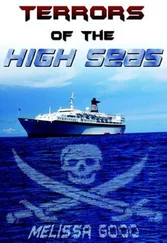1 ...6 7 8 10 11 12 ...21 While we could be taken in flank from the south if we attacked the English Fleet, thinking it to be in the north, and taken in the flank from the north if we made our attack in the south, the English were in the favourable position that as they approached our coast they need expect danger from only one quarter immediately ahead, the German Bight. They could send out submarines against the one base from which we should have to emerge, to do us all the damage they could on our way out and home, and need only keep that one point under observation. That relieved them of the obligation of detaching special observation forces.
THE BRITISH BATTLE FLEET 1
FLAGSHIP
Iron Duke.
FIRST BATTLE SQUADRON
Battleships
Marlborough. St. Vincent. Colossus. Hercules. Neptune. Vanguard. Collingwood. Superb.
SECOND BATTLE SQUADRON
Battleships
King George V. Orion. Ajax. Audacious. Centurion. Conqueror. Monarch. Thunderer.
THIRD BATTLE SQUADRON
Battleships
King Edward VII. Hibernia. Commonwealth. Zealandia. Dominion. Africa. Britannia. Hindustan.
FOURTH BATTLE SQUADRON
Battleships
Dreadnought. Temeraire. Bellerophon. Agincourt. Erin. Queen Elizabeth. War spite. Valiant. Barham.
FIRST BATTLE-CRUISER SQUADRON
Battle-Cruisers
Lion. Princess Royal. Queen Mary. New Zealand. Invincible. Inflexible. Indomitable. Indefatigable.
SECOND CRUISER SQUADRON.
Shannon. Achilles. Cochrane. Natal.
THIRD CRUISER SQUADRON.
Antrim. Argyll. Devonshire. Roxburgh.
FIRST LIGHT CRUISER SQUADRON.
Southampton. Birmingham. Nottingham. Lowestoft.
Destroyer Flotillas (number and composition unknown).
The above ships formed The Grand Fleet under the command of Admiral Sir John Jellicoe.
THE SECOND BRITISH FLEET.
Flagship
Lord Nelson
FIFTH BATTLE SQUADRON.
Battleships
Prince of Wales. Agamemnon. Bulwark. Formidable. Implacable. Irresistible. London. Queen. Venerable.
SIXTH BATTLE SQUADRON
Battleships
Russell. Cornwallis. Albemarle. Duncan. Exmouth. Vengeance.
FIFTH CRUISER SQUADRON
Light Cruisers
Carnarvon. Falmouth. Liverpool.
SIXTH CRUISER SQUADRON.
Drake. Good Hope. King Alfred. Leviathan.
THE THIRD BRITISH FLEET
Seventh Battle Squadron
Eighth Battle Squadron
Eight ships of the "Majestic" class.
Six ships of the "Canopus" class.
Seventh Cruiser Squadron
Ninth Cruiser Squadron
Tenth Cruiser Squadron
Eleventh Cruiser Squadron
Twelfth Cruiser Squadron
They comprised older cruisers, such as:
Cressy. Aboukir. Hogue. Hawke. Theseus. Crescent. Edgar. Endymion. Gibraltar. Grafton. Royal Arthur.
The Second and Third British Fleets were combined into the Channel Fleet under a special Commander-in-Chief.
With these enormous forces England was certainly in a position to make us feel the weight of her sea power. The most effective method of doing so would be the destruction of our Fleet. This was also the view of the English Commander-in-Chief at that time, who put it in these words:
"The above objects are achieved in the quickest and surest manner by destroying the enemy's armed naval forces, and this is therefore the first objective of our Fleet. The Fleet exists to achieve victory." 2
The English Fleet did not live up to these proud words, in spite of its strength and the geographical position. Yet our belief that it would act thus was thoroughly justified, and we had to decide our attitude accordingly.
In the War Orders which were issued to the Commander-in-Chief of the High Sea Fleet the task before him was framed as follows: The objective of the operations must be to damage the English Fleet by offensive raids against the naval forces engaged in watching and blockading the German Bight, as well as by mine-laying on the British coast and submarine attack, whenever possible. After an equality of strength had been realised as a result of these operations, and all our forces had been got ready and concentrated, an attempt was to be made with our Fleet to seek battle under circumstances unfavourable to the enemy. Of course, if a favourable occasion for battle presented itself before, it must be exploited. Further, operations against enemy merchant ships were to be conducted in accordance with Prize Court regulations, and the ships appointed to carry out such operations in foreign waters were to be sent out as soon as possible.
The order underlying this plan of campaign was this: The Fleet must strike when the circumstances are favourable; it must therefore seek battle with the English Fleet only when a state of equality has been achieved by the methods of guerilla warfare.
It thus left the Commander-in-Chief of the High Sea Fleet freedom of action to exploit any favourable opportunity and put no obstacles in his way, but it required of him that he should not risk the whole Fleet in battle until there was a probability of victory. Moreover, it started from the assumption that opportunities would arise of doing the enemy damage when, as was to be expected, he initiated a blockade of the German Bight which was in accordance with the rules of International Law. It is also to be emphasised that a submarine offensive was only required "whenever possible." The achievements of our U-boats absolutely exceeded all expectations, thanks to the energy with which the command faced the most difficult problem and the resolution of the commanders and crews, on their own initiative, to do more than was required of them.
As regards operations in the Baltic, the War Orders to the Commander-in-Chief of the High Sea Fleet contained no instructions, as a special Commander-in-Chief had been appointed for this area. If the English Fleet tried to carry the war into the Baltic, the condition precedent (a favourable opportunity for attack) laid down in the War Orders to the High Sea Fleet would materialise in the simplest fashion.
1.The Third Battle Squadron consisted of ships of the pre-Dreadnought period, the First, Second and Fourth Battle Squadrons of "Dreadnoughts." In the Fourth Battle Squadron the ships from the Agincourt onwards were not ready for sea at the outbreak of war.
2.In the book published in January, 1919, "The Grand Fleet, 1914–16," by Admiral Viscount Jellicoe of Scapa, the tasks of the British Fleet were set out as follows: (1) To ensure for British ships the unimpeded use of the seas, this being vital to the existence of an island nation, particularly one which is not self-supporting in regard to food. (2) In the event of war to bring steady economic pressure to bear on our adversary by denying to him the use of the sea, thus compelling him to accept peace. (3) Similarly, in the event of war, to cover the passage and assist any army sent overseas and to protect its communications and supplies. (4) To prevent invasion of this country and its overseas dominions by enemy forces.
Chapter 3
Awaiting the Enemy's Offensive
Table of Contents
On August 2 the Commander-in-Chief had summoned all the commanders of the three battleship squadrons, cruisers, destroyers and submarines to the flagship, and there explained to them the task set in the War Orders and his intentions with regard to it. Instructions had just been received from the Naval Staff that on the express wish of the Foreign Office no hostile action should be taken against English warships and merchant ships, as all hope of England's neutrality had not yet been abandoned. In his desire to keep England out of the war the Imperial Chancellor had gone so far as to enter into an obligation, through our ambassador in London, not to conduct operations in the Channel or against the north coast of France if England remained neutral. In this way she would be released from her own obligation to protect the north coast of France with the English Fleet. The same day, however, we received subsequent instructions that the English cable communications with the Continent had been broken off, and that we had to anticipate hostile action on the part of England.
Читать дальше












